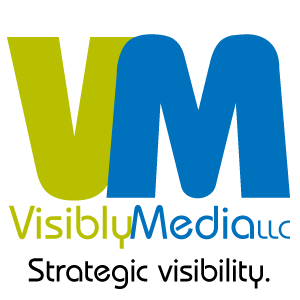Another week begins, and you’ve got a great idea for a new article. You get your glass of water or wine, some yogurt, and take out your laptop. Wait! Before you bend over your keyboard and punch out another blog article, ask yourself two questions:
- How will this article benefit my readers?
- Why should my audience care about this article?
Are you writing for yourself, or for your readers? If you’re not thinking about this question, you should be.
So, What?
This is a book recommended to me by my business networking group Area Director, Paul Kyrimis of AmSpirit Business Connections. I thought I would share with you a lesson I’ve learned when it comes to my own writing.
One of the chapters the author writes about details his experience as a professional speaker encountering a new prospective client. The author was introduced to this prospect and invited to give his presentation to him — just him. The prospective client wanted to be sure the content was worthy of his employees’ time to attend.
What the author discovered was not what he expected. He gave his presentation but was stopped, then driven to answer the same two questions. He realized he had not been writing content for people to read; rather, he had been writing content so people could read what he wanted them to read.
These two concepts are not the same; they are mutually exclusive.
Writing For Yourself
You have a thought to flesh out and post. It draws no real conclusion or “lessons learned”. It wants to be inspirational but is a bit lackluster. The writing is more of a release of intellect, of a thought that’s been nagging at you a bit like laundry that has to get done.
How many seminars have you attended where you didn’t learn any additional skills to apply? Worse, did you learn skills but weren’t shown how they could be applied? Finally, were you left thinking, “Why should I care?” These are the thoughts you don’t want your audience thinking.
Writing For Readers
Basically, this means writing to answer questions from your audience. Now, that doesn’t necessarily mean your readers will email or post questions to you (although, they might); rather, it’s writing to give them knowledge of how to approach (fill in the blank), or how to solve (fill in the blank).
For example, let’s say your meeting was all in-person and is now going hybrid – some online, some in person — and you are giving a presentation about this new format. If you don’t answer either the “how” or the “why” in the back of everyone’s mind, not only will the audience feel like they were lectured to, they may actually resist the new format. Your presentation will then leave some, or all, behind.
As you write in this new WIIFT fashion (What’s In It For Them), you may restate their questions once or twice, answer them, then fill in the “why should I care” thought with reasons to care — how this will apply to them, and the benefits they will reap. As you post your articles on social media, you will drive more thought-provoking engagement vs. the softer “wow, that was great” comments. You will begin to feel driven to answer more of their questions, truly setting yourself up as the go-to person. A subject-matter expert.
This type of writing is harder to do, but, once practiced, becomes easier to do over time.
What does all of this engagement do? It puts more spotlight on you and your business. Viewers new and returning will see the new articles on their social pages and click your links to read them. As these readers land on your pages, you will find a select few who will sign up to receive your e-newsletter and learn more about what you do.
Ready To Start?
Set yourself down with your laptop and a nice cup of tea or coffee. Do a bit of box breathing to help clear your mind and put focus on your article. Ask yourself these two questions again:
- How will this article benefit my readers?
- Why should my audience care about this article?
Now you’re ready to begin.
If you’d like to grab that book I referenced above, here’s the link from Amazon.com: https://www.amazon.com/So-What-Communicate-Matters-Audience/dp/0137158262
Be strategic. Be visible. Be found.
Ready to start using social media smarter, not harder? Schedule a 15-minute one-on-one coffee chat over ZOOM to talk about strategically incorporating both social media and inbound strategies into your current marketing plan.
Branded ZOOM backgrounds allow businesses to not only add another option for secondary marketing but also confirm both identity and authority to prospects and customers. Investment starts at $60. Visit our webpage to get started.
#smallbusiness #businesstips #marketingtips #socialmedia #digitalmarketing #visiblymedia #tuesdaythoughts







